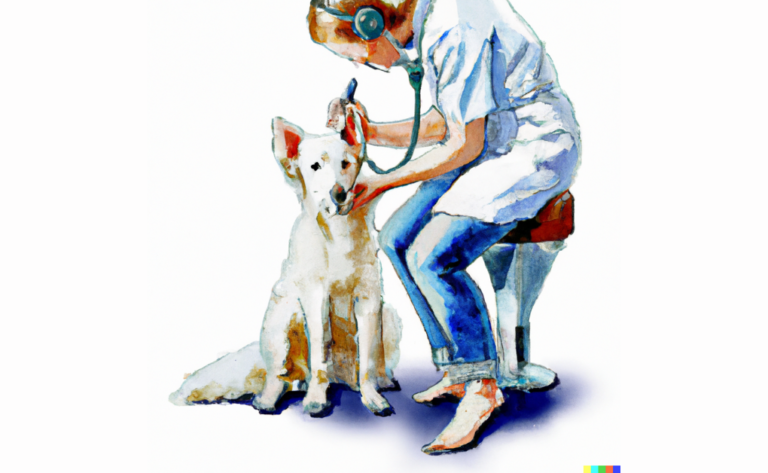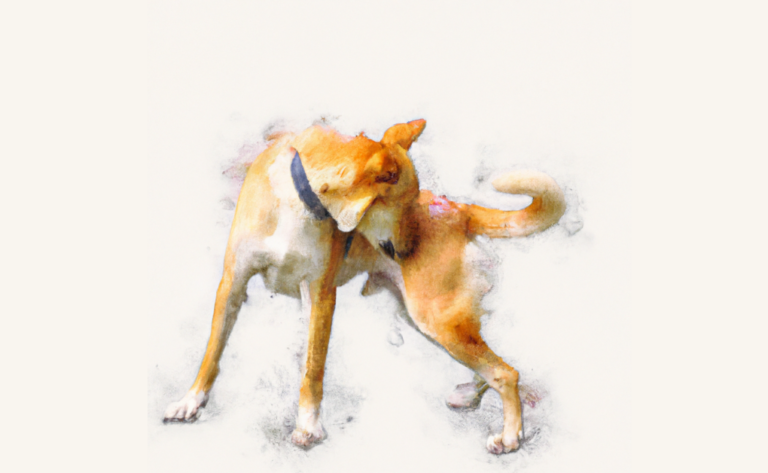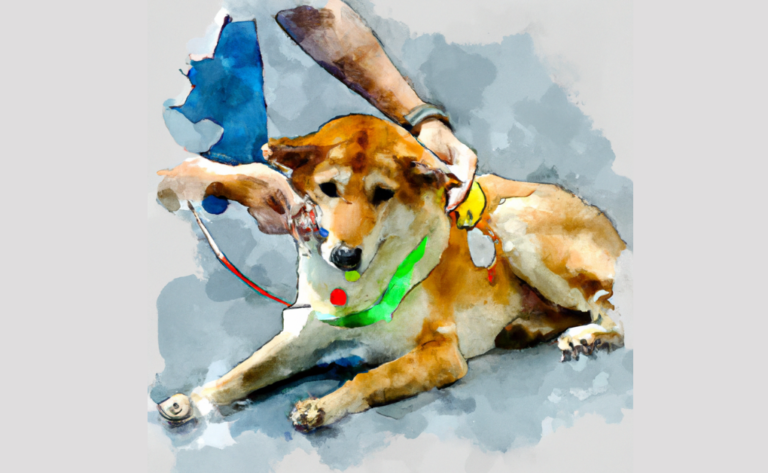Guiding Your Overweight Dog to Lose Weight
As a responsible pet owner, ensuring your dog maintains a healthy weight is crucial for overall well-being. Unfortunately, excess weight can lead to numerous health problems, just as it can for humans. This blog post will discuss strategies and tips to help your furry friend lose weight. From tailored diets and exercise routines to understanding the importance of foods and treats, we’ll guide you through helping your dog shed those extra pounds while maintaining their happiness and vitality. Let’s work together to keep your four-legged companion healthy and thriving for years!
What Causes Canine Obesity?
Canine obesity can be caused by a combination of factors, which may include:
- Overfeeding: Feeding dogs excessive food or providing them with unhealthy, many calorie-dense treats can lead to lots of weight gain. Following recommended feeding guidelines based on your dog’s age, size, and activity level is essential.
- Lack of exercise: Dogs need regular physical activity to maintain a healthy weight. A sedentary lifestyle can contribute to obesity, especially in breeds predisposed to weight gain.
- Genetic predisposition: Certain dog breeds have a genetic predisposition to obesity. Labrador Retrievers, Dachshunds, and Beagles are among the breeds that are more likely to become overweight than other breeds.
- Age: As dogs age, their metabolism slows down, and they become less active. This may result in weight gain if their diet and exercise routines are not adjusted accordingly.
- Neutering or spaying: These procedures can cause hormonal changes that may affect a dog’s metabolism and appetite, potentially leading to weight gain.
- Medical conditions: Certain health issues, such as hypothyroidism, Cushing’s disease, or insulin resistance, can contribute to obesity in dogs.
- Medications: Some medications, like steroids, can cause increased appetite and weight gain in dogs.
To prevent canine obesity, providing a balanced diet, regular exercise, and monitoring your dog’s weight regularly is crucial. In addition, if you suspect an underlying medical condition or medication side effect contributes to your dog’s weight gain, consult your veterinarian for appropriate diagnosis and treatment.
Health Problems Related to Canine Obesity
According to statistics, 56% of dogs in the U.S. are either overweight or obese, which can lead to various health issues. Obesity in dogs can lead to both short-term and long-term health problems. Some of the common health issues associated with canine obesity include:
Diabetes
Diabetes in dogs, precisely Type 2 diabetes, is a health problem that can be caused by obesity. When a dog becomes overweight, their body may struggle to produce enough insulin or use it effectively to regulate blood sugar levels. As a result, glucose builds up in the bloodstream, leading to high blood sugar levels and causing various health issues, including excessive thirst, frequent urination, lethargy, and poor wound healing. If left untreated, diabetes can lead to more severe complications such as kidney failure, nerve damage, and vision loss. Therefore, maintaining a healthy weight through a balanced diet and regular exercise is crucial to reduce the risk of obesity-related diabetes in dogs.
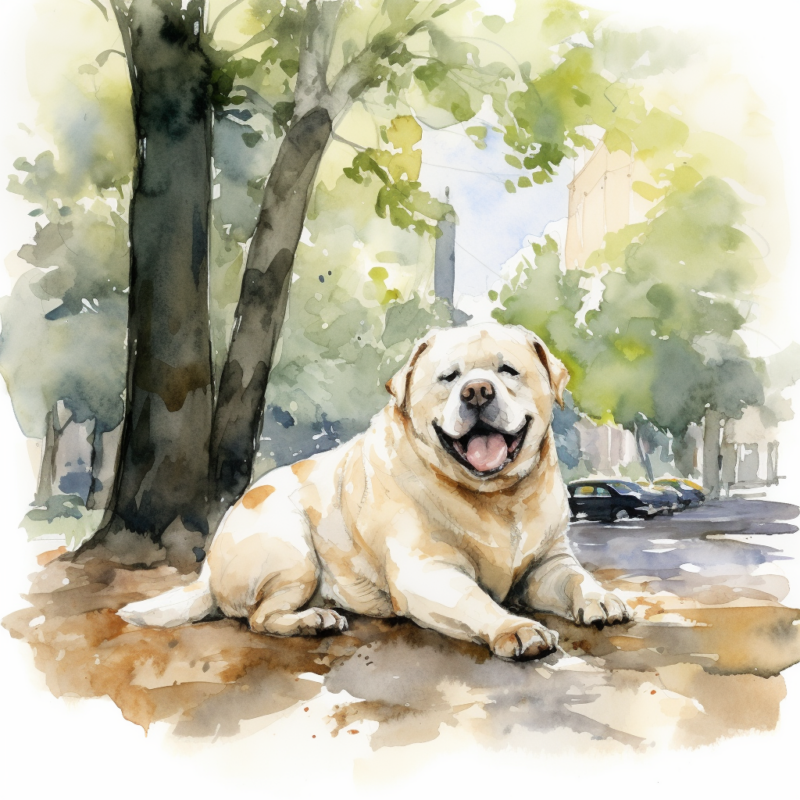
Heart Disease
Heart disease is another serious health problem that can be caused by obesity in dogs. When a dog is overweight, it stresses the heart more, forcing it to work harder to pump blood throughout the body. Over time, this can lead to various heart issues, such as congestive heart failure, abnormal heart rhythms, and thickening of the heart muscle. Symptoms of heart disease in dogs can include coughing, shortness of breath, exercise intolerance, and lethargy. Ensuring your dog maintains a healthy weight through proper nutrition and regular exercise can significantly reduce the risk of obesity-related heart disease and improve their overall quality of life.
Joint and Bone Problems
Joint and bone problems are common health issues in obese dogs, as excess weight stresses their skeletal system. This added pressure can lead to the development of conditions such as osteoarthritis, hip dysplasia, and other degenerative joint diseases, causing pain, inflammation, and reduced mobility. Overweight dogs are also at a higher risk for ligament and tendon injuries due to the extra strain on their joints. Maintaining a healthy weight through proper diet and exercise can significantly alleviate the burden on your dog’s joints and bones, helping to prevent these painful conditions and improve its overall quality of life.
Respiratory Issues
Respiratory issues are another health problem that can arise in dogs due to obesity. Excess weight puts added pressure on the chest cavity, making it harder for the lungs to expand and restricting the dog’s ability to breathe efficiently. This can lead to shortness of breath, exercise intolerance, and even worsened cases of existing respiratory conditions such as tracheal collapse or brachycephalic obstructive airway syndrome. Obese dogs may also develop sleep apnea, which disrupts their breathing during sleep, leading to poor sleep quality and overall decreased well-being. Helping your dog achieve a healthy weight can alleviate these respiratory issues, allowing them to breathe easier and live more comfortably.
Liver Disease
Liver disease is another health problem that can be caused by obesity in dogs. When a dog is overweight, excess fat accumulates in the liver, leading to hepatic lipidosis or fatty liver disease. This fat accumulation impairs the liver’s ability to function correctly, causing inflammation, reduced detoxification capabilities, and potentially even liver failure if left untreated. The liver is a vital organ responsible for processing nutrients, producing proteins, and eliminating toxins; hence, impaired liver function can severely affect your dog’s overall health. Maintaining a healthy weight for your dog can help prevent the development of liver disease and ensure the proper functioning of this crucial organ.
Reduced Life Expectancy
Obesity in dogs can lead to a reduced life expectancy. Overweight dogs are at a higher risk of developing conditions such as diabetes, heart disease, joint and bone problems, respiratory issues, and liver disease, which can significantly impact their overall health and quality of life. As these health problems accumulate, they can result in a shorter lifespan for your canine companion. By helping your dog maintain a healthy weight, you not only reduce the risk of these health issues but also promote a longer, happier life for your furry friend.
Skin Problems
Obesity in dogs can contribute to various skin problems, as the excess weight can cause folds and creases in the skin, creating an ideal environment for bacterial and fungal infections. Overweight dogs may also have difficulty grooming themselves properly, leading to a buildup of oils, dirt, and dander on the skin’s surface. These factors can result in skin irritation, inflammation, and infections, causing discomfort and potentially leading to more severe health issues if left untreated. Maintaining a healthy weight can help minimize the risk of skin problems in your dog and improve its overall skin health and comfort.
Increased Risk of Certain Cancers
Obesity in dogs has been linked to an increased risk of certain types of cancers, including mammary tumors, bladder cancer, and some forms of lymphoma. Excess body fat can cause chronic inflammation and hormonal imbalances, which may contribute to the development of cancerous cells. Furthermore, overweight dogs may have a weakened immune system, reducing their ability to fight off cancer and other diseases effectively. Helping your dog maintain a healthy weight through a balanced diet and regular exercise can decrease their risk of developing obesity-related cancers and support their overall health and well-being.
Compromised Immune System
Obesity in dogs can lead to a compromised immune system, making them more susceptible to various infections and diseases. Excess body fat can cause chronic inflammation and disrupt the normal functioning of the immune system, reducing its ability to respond effectively to pathogens and harmful substances. This weakened immune response may make overweight dogs more prone to bacterial, viral, and fungal infections and decrease their ability to recover from illnesses and injuries. Maintaining a healthy weight for your dog through a proper diet and regular exercise can support a robust immune system and overall better health for your canine companion.
To maintain your dog’s overall health and well-being, monitoring their weight and ensuring they receive proper nutrition and exercise is crucial. If you suspect your dog is overweight, consult your veterinarian for a weight loss plan tailored to your pet’s needs.
What are the Signs of an Overweight Dog?
To tell if your dog needs to lose weight, you can use the following methods:
- Rib Check: Place your hands on your dog’s ribcage with your thumbs along the spine and your fingers on the sides. You should be able to feel the ribs without pressing too hard. If you can’t handle the ribs or must apply pressure to locate them, your dog might be overweight.
- Profile view: Observe your dog from the side. A healthy-weight dog should have a visible abdominal tuck, meaning the area behind the ribs should slope upward toward the hind legs. If this tuck is not visible or the belly appears rounded, your dog might carry extra weight.
- Overhead view: Look at your dog from above while they’re standing. You should see a clear waistline indentation between the ribs and hips. Your dog may be overweight if it has a straight or rounded shape with no waist.
- Body condition score: Veterinarians use a body condition score (BCS) system to assess a dog’s weight, typically on a scale from 1 to 9, with one being emaciated and nine being obese. A healthy dog should have a BCS of around 4 or 5. Consult your veterinarian to get an accurate BCS for your dog.
- Professional assessment: Consult your veterinarian to clarify your dog’s weight or body condition. They can thoroughly examine and provide recommendations for a healthy weight and diet.
Remember that each dog’s ideal weight may vary based on breed, age, and activity level. Regularly monitoring your dog’s weight and body condition can help you identify potential weight issues early and take appropriate action to maintain their overall health.
Help your Dog Achieve a Healthy Weight
Helping your dog lose weight involves a combination of proper diet, exercise, and lifestyle adjustments. Here are some steps you can take:
Proper Diet
A proper diet for a dog to lose weight should focus on providing balanced nutrition while reducing caloric intake. Here are some key components to consider when planning your dog’s weight loss diet:
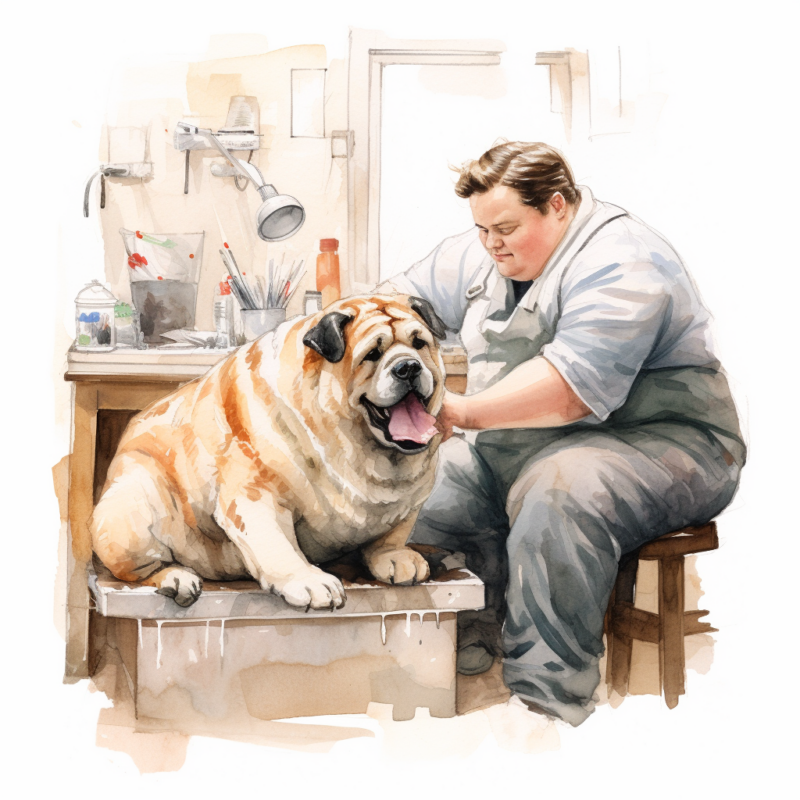
- High-quality protein: Choose a diet that contains high-quality protein from animal sources, such as chicken, fish, or turkey. Protein helps maintain lean muscle mass while supporting weight loss, as it requires more energy to digest than fat and carbohydrates.
- Low-fat content: Opt for foods with lower fat content to reduce the overall calorie intake. However, make sure your dog’s diet provides essential fatty acids for your dog’s health.
- High-fiber content: Foods with high fiber content can help your dog feel fuller for longer, reducing the likelihood of overeating. Look for ingredients like whole grains, vegetables, and legumes rich in dietary fiber.
- Moderate carbohydrate levels: Choose complex carbohydrates that provide sustained energy, like brown rice or sweet potatoes, rather than simple carbohydrates, like corn or white rice.
- Balanced vitamins and minerals: Ensure the diet contains all the necessary vitamins and minerals to support your dog’s overall health.
- Portion control: Measure your dog’s food portions using a measuring cup to ensure they get the appropriate amount based on size, age, and activity level.
- Scheduled mealtimes: Feed your dog at specific times each day rather than allowing them to graze on food throughout the day. This will help regulate their caloric intake and prevent overeating.
- Please consult your veterinarian: Speak with your veterinarian before making any changes to your dog’s diet, as they can recommend a suitable weight loss plan tailored to your dog’s needs.
- Monitor progress: Keep track of your dog’s weight and adjust their food intake to make sure your dog loses weight at a healthy pace.
By focusing on a balanced, nutrient-dense diet with controlled portions and the guidance of a veterinarian, you can help your dog lose weight and achieve better overall health.
Lots of Exercises
To help dogs lose weight, engaging them in regular exercise that suits their breed, size, age, and physical condition is essential. Here are some reasonable practices:
- Walking: Daily walks are essential for most dogs. Start with a comfortable pace and gradually increase the distance and duration as your dog’s fitness level improves.
- Running: Running can be an excellent way to burn calories for dogs with more energy. However, build up their endurance gradually and consider the terrain to prevent injury.
- Fetch: Playing fetch is a fun way to get your dog moving. Use a ball, frisbee, or another toy to encourage them to run and retrieve it.
- Swimming: Swimming is a low-impact exercise that helps dogs lose weight while being gentle on their joints. Ensure your dog is comfortable with water and supervise them closely during swimming sessions.
- Agility training: Set up an agility course with jumps, tunnels, and weaving poles to challenge your dog physically and mentally. This can be done at home or in a dog park.
- Hiking: For adventurous dogs, hiking on trails provides a change of scenery and allows them to explore new environments while burning calories.
- Tug-of-war: A game of tug-of-war is a great way to engage your dog in a playful workout. Be mindful of their teeth and jaw strength, and avoid aggressive play.
- Doggy playdates: Organize playdates with other dogs to encourage socialization and exercise through play.
Training to Run
Training your dog to run for weight loss should be a gradual and enjoyable process for you and your pet. Follow these steps to help your dog get accustomed to running:
- Start with walking: Begin by walking your dog regularly to build up its endurance and fitness level. Then, gradually increase the duration and pace of the walks over several weeks.
- Introduce short running intervals: After your dog has become accustomed to walking briskly, start introducing short running breaks during your walks. For example, run for 30 seconds and then walk for a minute or two. Repeat this pattern throughout your hike.
- Gradually increase running intervals: Over time, slowly increase the length and frequency of the running intervals. Then, monitor your dog’s comfort level and adjust the gaps accordingly.
- Warm-up and cool-down: Like humans, dogs benefit from warming up before running and cooling down afterward. Start each running session with a 5-10 minute walk to warm up your dog’s muscles and end with a similar walk to help them cool down and stretch.
- Choose the suitable surface: Running on grass or dirt trails is generally easier on your dog’s joints than running on concrete or asphalt. Also, avoid hot surfaces during warm weather, as they can burn your dog’s paw pads.
- Hydration and rest: Ensure your dog has access to fresh water before, during (if needed), and after the run. Allow them to rest and recover after each running session.
Remember that patience is essential when training your dog to run. It may take several weeks or months for your dog to build up their endurance and adjust to a running routine. Always be mindful of their comfort and safety, and consult with your veterinarian if you have concerns about your dog’s health during the training process.
Making Exercise Fun
Making exercise fun for your dog is essential to keep them engaged, motivated, and healthy. Here are some ideas to make exercise enjoyable for your pet:
- Play fetch: Most dogs love playing fetch with a ball, frisbee, or their favorite toy. This game encourages your dog to run and get its heart rate up.
- Go for a hike: Explore local trails or nature reserves with your dog. Hiking provides a change of scenery and allows your dog to use their natural instincts to explore new environments.
- Play tug-of-war: Tug-of-war is a great way to engage your dog in a fun, interactive activity. Use a rope toy or an old towel to play this game, ensuring you play gently and not hurt your dog’s teeth or neck.
- Set up an agility course: Set up a simple one in your backyard or at a local dog park. Use cones, tunnels, and jumps to create a fun and challenging obstacle course for your dog to navigate.
- Go for a swim: If your dog enjoys water, swimming can be an excellent low-impact exercise. Find a safe and dog-friendly body of water, such as a lake or pool, and let your dog swim and play.
- Take a bike ride: If your dog is well-trained on a leash, you can take them for a bike ride. Use a bike attachment or a sturdy leash to keep your dog safe and secure while running alongside your bike.
- Socialize with other dogs: Schedule playdates with other dogs or visit a dog park to allow your dog to socialize and play with their peers.
- Rotate activities: Keep things interesting for your dog by rotating different exercises and games. This will prevent boredom and maintain their enthusiasm for physical activity.
Always tailor the exercise programs to your dog’s breed, age, and fitness level. Be patient, use positive reinforcement, and make exercise a regular part of your dog’s daily routine.
Weigh Your Dog Regularly
Weighing your dog regularly is essential for monitoring its overall health and well-being. Regular weight checks help you detect sudden weight loss or gain, indicating underlying health issues, such as thyroid problems, diabetes, or heart disease. Additionally, tracking your dog’s weight enables you to adjust their diet and exercise routine as needed, ensuring they maintain a healthy weight, preventing obesity-related issues, and promoting a better quality of life. By staying proactive with regular weight checks, you can address potential health concerns early and provide the best care possible for your furry companion.
Frequently Asked Questions
Disclaimer: The information provided on this veterinary website is intended for general educational purposes only and should not be considered as a substitute for professional veterinary advice, diagnosis, or treatment. Always consult a licensed veterinarian for any concerns or questions regarding the health and well-being of your pet. This website does not claim to cover every possible situation or provide exhaustive knowledge on the subjects presented. The owners and contributors of this website are not responsible for any harm or loss that may result from the use or misuse of the information provided herein.


